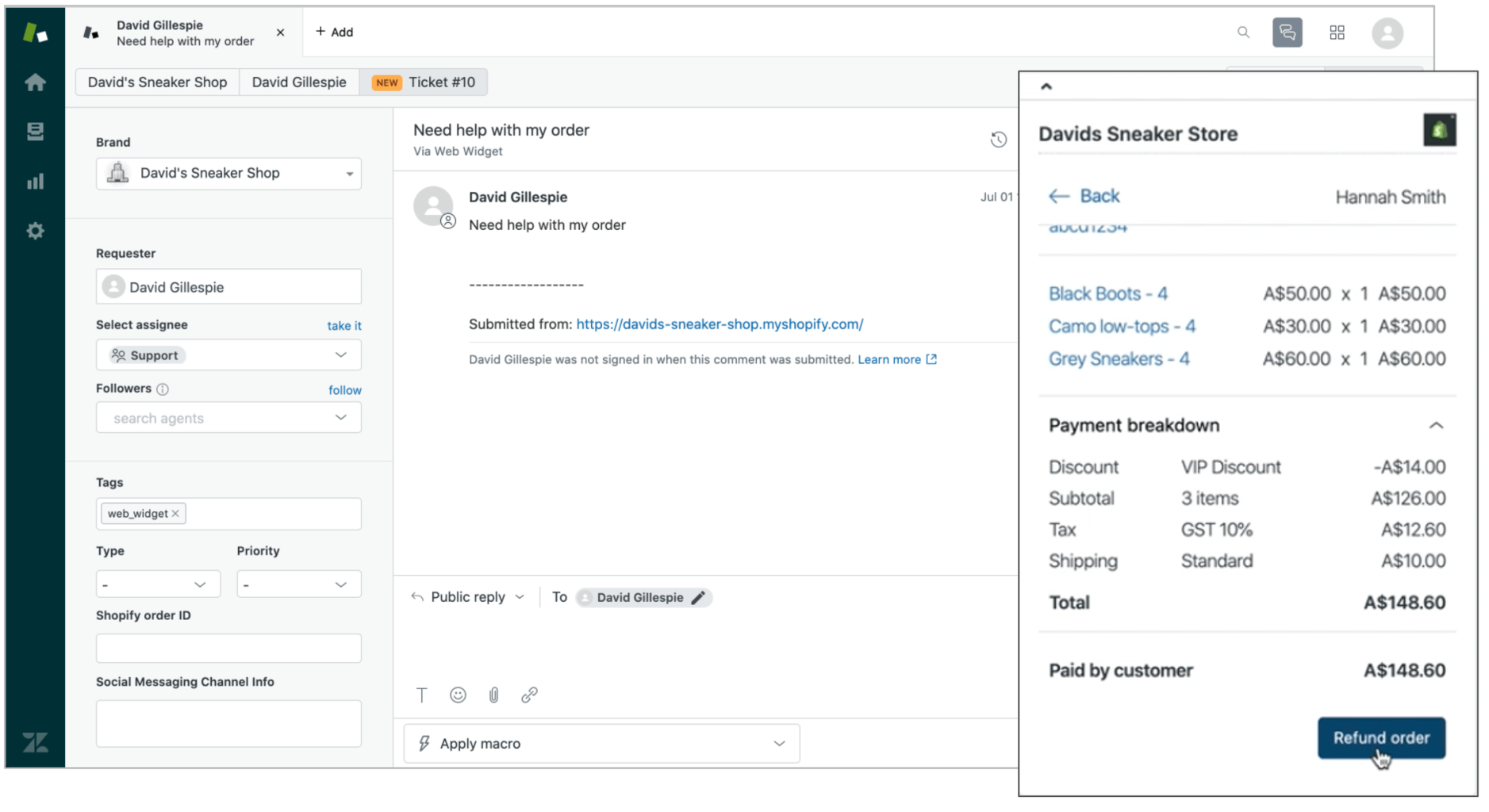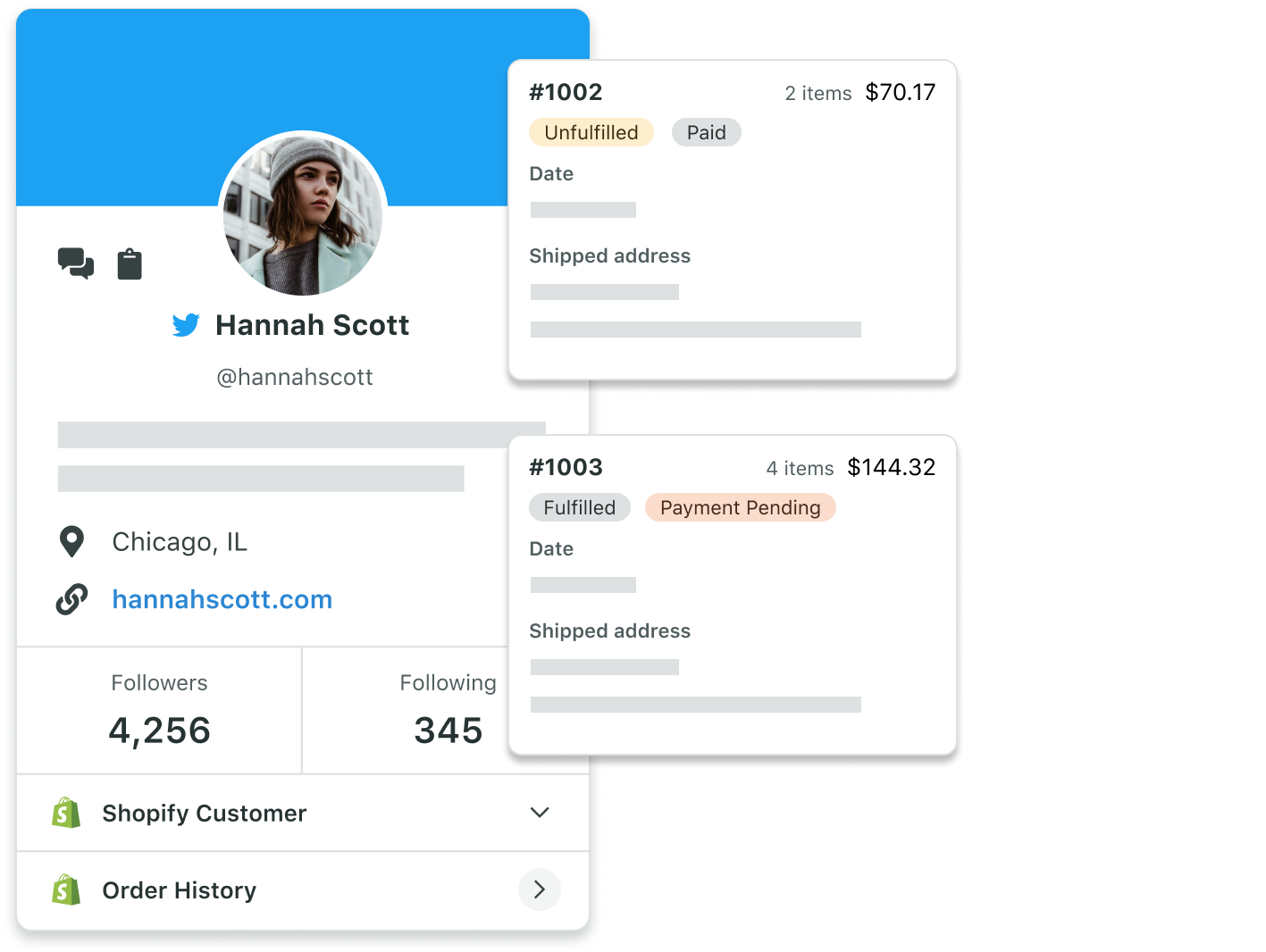Is your business prepared for the era of conversational commerce?
With so many avenues for consumers to make purchases and interact with their favorite stores, merchants have to engage with customers anywhere and everywhere.
On-site. Via smartphone. Social media. You name it.
But having a basic help desk or customer contact form isn't enough anymore. Modern customers expect conversations and meaningful interactions with brands.
We've seen it firsthand: our own research notes that 60% of brands say private/direct messaging plays a role in their customer care strategy.
That's why brands today need to embrace conversational commerce, acting as a digital concierge to produce a better experience and win more sales.
And in this guide, we'll break down the basics of how to do exactly that.
What is conversational commerce, anyway?
Let's kick things off with a quick definition.
Conversational commerce represents the use of technology by merchants to engage with customers in real-time, assisting in the purchasing process. Through messaging apps, chatbots and other automated tools, brands are able to balance personalization and efficiency for a better buying experience.
A shining example of multichannel marketing, conversational commerce represents a win-win for merchants and shoppers alike.
Through digital messaging tools and bots, merchants can serve customers thoughtfully either through real-time conversations or automated responses. In turn, customers get the answers they need without needless waiting or back-and-forth.
Examples of conversational commerce
Chances are you've engaged with chatbots or live support yourself, right?
And if so, you've seen conversational commerce in action.
Below are some of the most common ways that brands bridge customer conversations and more sales with digital tools.
Live chat
Food for thought: 41% of consumers prefer live chat support over competing service channels.
Every customer is different, but there's no denying that there are buyers that prefer chat support over calls or email. Live chat is ideal for those who want direct answers ASAP, no frills required.
Tools such as Help Scout are commonplace on today's ecommerce sites. These platforms give users a place to ask questions or get updates directly from a storefront. Ideally, live chat platforms give customers the choice between chatting with an actual person or a bot.
Meanwhile, brands like Clinique are leveling up their support with real-time, face-to-face live chats with their consultants. This is a prime example of how brands can go above and beyond to provide personalized service to customers.

Expect video calls to become the future of conversational commerce (especially as remote work and ecommerce continue to boom).
Messaging and support tools
Automated help desks and messaging tools can serve as a supplement to live chat.
Ideally, these tools should sync with your CRM and database to keep tabs on your customers' order history and past interactions. For example, Zendesk integrates with Shopify so merchants can put their customers' questions and concerns into context.

Conversational commerce should feel personalized, not one-size-fits-all. Having all of your customers' details handy when going back and forth is a huge plus. You can also use Sprout’s own social commerce and business integration to track customer order history and past service tickets to get a full picture of how that customer has interacted with your business.

Chatbots
The popularity of chatbot marketing speaks for itself, particularly on social media.
And don't let naysayers tell you otherwise: 40% of consumers have no preference whether they talk to a person or bot as long as they find what they're looking for.
The good news is that social media chatbots are perfect for basic queries and FAQs that can be automated. For example, the Gymshark Facebook Messenger bot can answer questions regarding order status, returns or availability in just a few taps.
Chatbots ultimately free up the time of your reps and employees so they aren't answering the same questions, instead spending their time engaging with customers regarding more pressing concerns.
Voice assistants
Fact: nearly half of millennial shoppers that regularly engage their virtual assistants (such as Amazon Echo or Google Home) have used them to make purchases.
Surprising, right?
Voice-shopping is perhaps the most literal example of conversational commerce. For example. Echo automatically recommends purchases and reminds users of past orders based on their purchase history. Users can then confirm orders or add items to their Amazon cart via voice.














